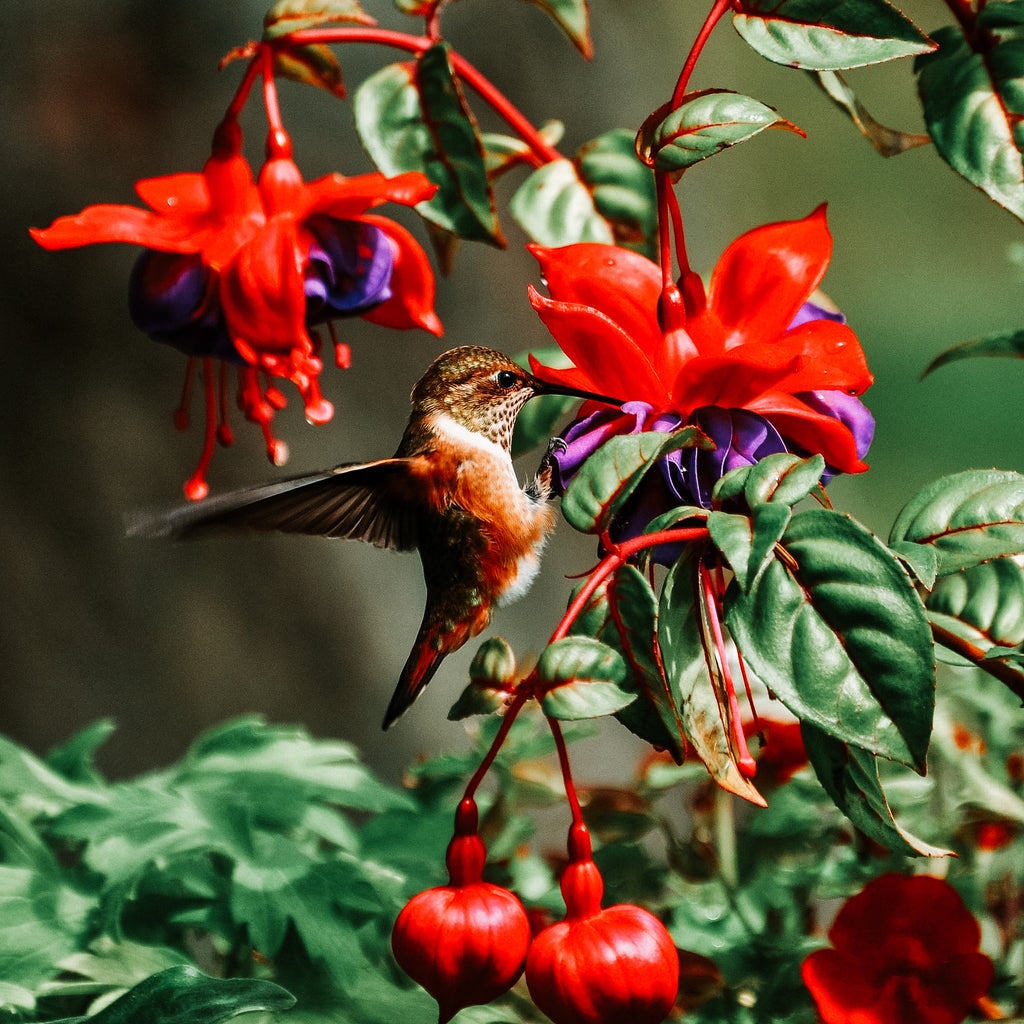
Beauty, color and song are just a few benefits of birdscaping. Creating a sheltered haven for birds offers a unique opportunity to observe flittering wildlife in a lovely natural sanctuary. Birds are also a boon to pest control as they dine heartily on insect pests. The secret to a bird-friendly garden is to have a mix of flowering plants that provide nectar for hummingbirds, nourishing seeds or berries for songbirds, or shrubbery for shelter to provide nesting sites and protection from predators. There are so many plants to choose from, like Aloe, Arctostaphylos, Ceanothus, Heteromeles, Penstemon, and Salvia, but here are a few choice plants for you to consider.
Arbutus 'Marina' – Marina Strawberry Tree has beautiful flowers and red edible fruit. Clusters of urn-shaped pinkish-white flowers are produced year-round along the coast with peaks in spring and fall. This handsome evergreen tree grows 25-50 feet tall with a broad dense crown. Both birds and bees enjoy this tree.
Pennisetum orientale – Fuzzy pinkish flowers rise on spikes above arching clumps of fine-textured grass from late spring through fall. To 18 inches tall, this winter-dormant grass offers plenty of seeds in fall and thatch for nests in spring. The pink plumes are spectacular when back lit.
Cercis occidentalis – Western Redbud is one of the most dramatic of California natives, with a profuse display in spring of vibrant magenta blooms. A small deciduous shrub or tree to 15 feet tall. Flowers are followed by flatted reddish seed pods that age to light brown and often hold on into winter.
Callistemon 'Little John' – The blood-red blooms of Dwarf Bottlebrush provide plenty of nectar for hummingbirds and honeybees. This showy compact shrub is the perfect size for any garden. Bristle-like stamens appear throughout the year, but peak bloom is early summer through fall. Evergreen. To 5 feet tall with a wide, rounded spread.
Kniphofia uvaria –Hummingbirds love the tropical color and flower spikes of Red Hot Poker. Flowers develop during the summer and last for weeks on wand-like stems above fine green foliage. Although water-wise, plants tend to bloom more profusely with supplemental water in summer.
Grevillea rosmarinifolia 'Scarlet Sprite' – Prolific scarlet and cream-colored flowers provide nectar over an extended period. Dense soft-textured needle-like foliage is terrific for providing bird habitat. Compact shrub to 4 to 5 feet tall by a bit wider. Nice specimen plant or trim to form a short hedge.
Magnolia grandiflora – The classic Southern Magnolia makes a spectacular specimen tree. Its glossy leaves and glorious displays of large, fragrant flowers make it a favorite in the western landscape. This distinguished tree can reach 80 feet tall and 40 feet wide.
Viburnum tinus 'Spring Bouquet' –Showy and fragrant pinkish-white spring flowers are followed by the arrival of metallic-blue berries that birds flock to in summer and fall. The versatile Compact Viburnum reaches only 4 to 6 feet tall and wide. Evergreen with dense, dark-green foliage.
Eriogonum giganteum – The incredibly distinct flowers, leaves, and seeds of Saint Catherine's Lace are all put to good use by birds, bees and butterflies. This big buckwheat is native to the Channel Islands. Intricate cream-colored flowerheads can be up to a foot across in mid-Spring. Evergreen and mound-forming to 4-6 feet tall and wide.
Rosa rugosa – Sweetly fragrant, this carefree rose offers rugged beauty and fierce protection for our feathered friends and an impenetrable border hedge for property owners. Large pink blooms cover this plant in early summer, giving way to sporadic blossoms that lead up to plump rose hips that look like clusters of ripe cherry tomatoes that last into late autumn.
